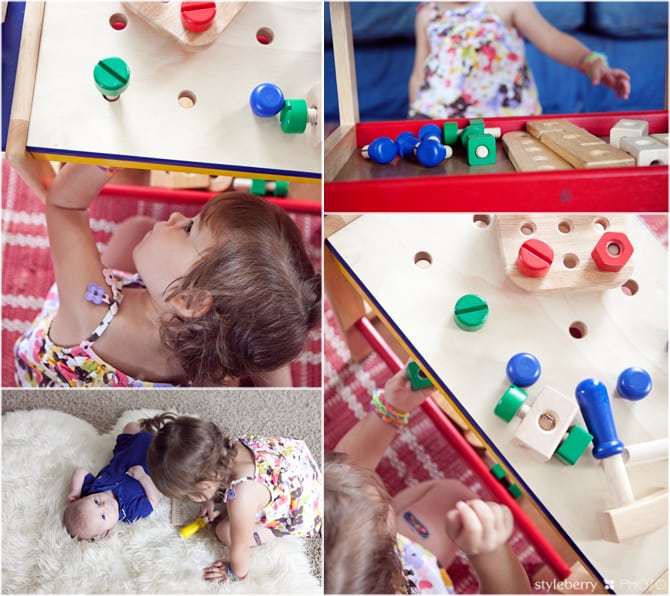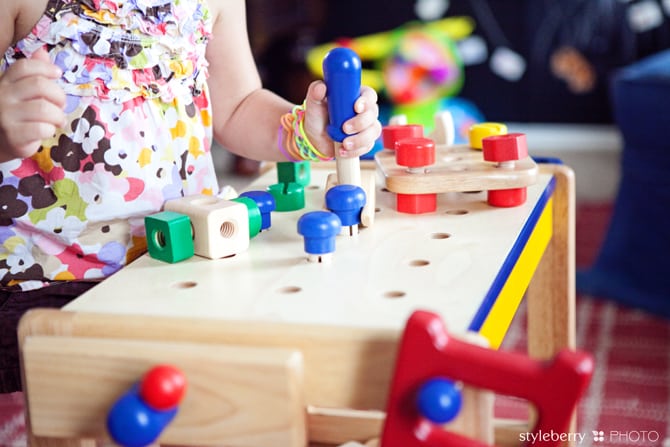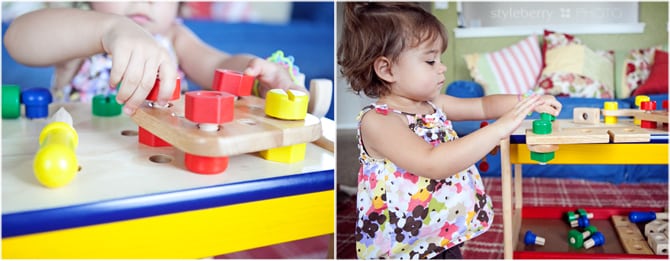Every Girl Needs Her Own Set of Tools
Some of my fondest memories as a kid were in my garage with my dad. We built stuff. We painted stuff. We did a lot of messy things, and I loved it. I knew how to use a drill & a paint brush at a very young age. & despite being very into all things girly, I certainly loved my tools and garage time. & I hope my kiddies do too.
Although my first born was a girl, the last thing I wanted was a playroom exploding with pink. Don't get me wrong, we have plenty of babies & strollers, but we've got lots of hammers and cars & dump trucks too. 🙂 I want her to play with it all. & when my son starts playing, I will encourage him to love on babies just as I encourage her to use her screwdriver. As gender roles are defined early, I think it is vital for a little girl to know she can do all the things little boys are supposed to love–and is more than capable of doing them herself.
Which is exactly why we are loving this workbench! It's one of my favorite things from Land of Nod. & my girl is loving it. As you can see! 🙂



'Cause every girl needs her very own set of tools. Swear. 🙂
Post by shawna of styleberryBLOG.com
Despite days full of washing diapers & messy fun, Shawna is determined to make mommyhood a stylish adventure. Married to the military & mother to one feisty girl & a snuggly little guy, she is a passionate DIYer & loves sharing how to make the complicated simple. Shawna talks creativity, style, food, decorating, green-chic living & mommyhood at styleberryBLOG, a daily-ish dose of something fab.